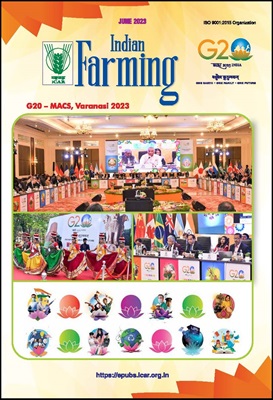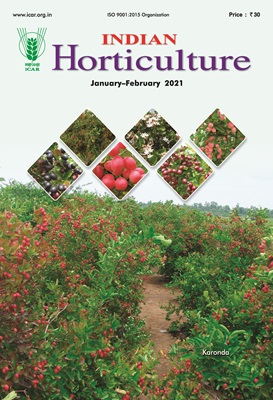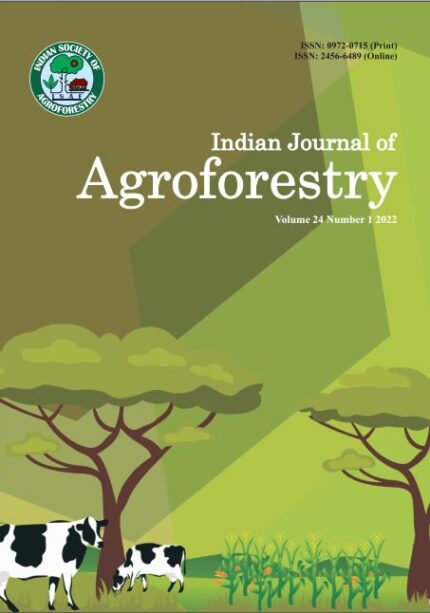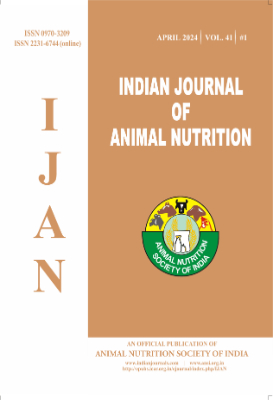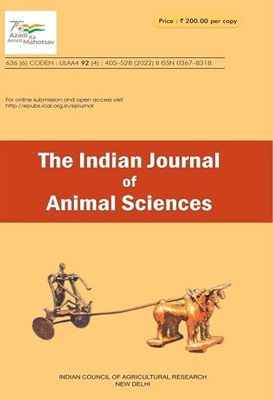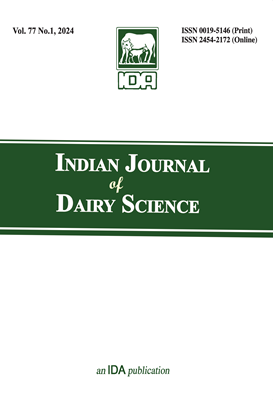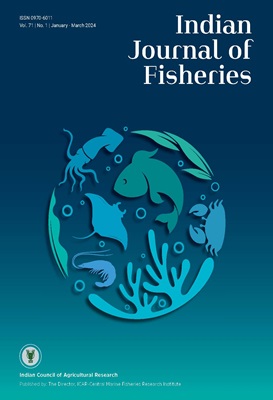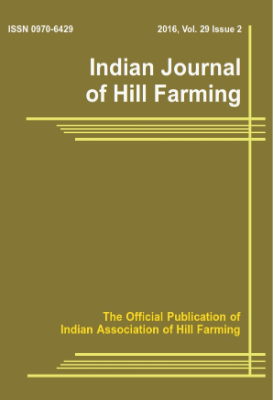E-Resources
ICAR Budget Book 2021-22
The Indian Council of Agricultural Research (ICAR) is an autonomous organization at the national level
responsible for the organization and management of research, education and extension in the field of agriculture,
animal sciences and fisheries. The ICAR operates national research and training network consisting of a
number of diversified institutions, viz. Central Research Institutes (CRIs), National Research Centers (NRCs),
Project Directorates (PDs), Project Coordinating Units (PCUs), etc. The ICAR has, thus, been instrumental in
the establishment of innovative institutions for higher education, research and extension training. It has provided
not only developmental assistance and technical guidance but has helped in developing appropriate institutional
models and research strategies.
In the furtherance of its objectives, the ICAR receives budgetary support from the Government under the
bye-laws of the ICAR, by way of :-
(i) Government of India grants;
(ii) Other sources (Internal Resource Generation)
ICAR has fully implemented the Treasury Single Account system with effect from 1st August, 2020. Due
to merger of Plan & Non-Plan Budget from the year 2017-18, the Government?s classification will be done on
Revenue and Capital. The total expenditure to be met out of the Government of India grants has been divided
in three components under Grant for Creation of Capital Assets, Grant-in-Aid-Salary & Grant-in-Aid General
including Pension in respect of various subject matter division, which are further divided into components i.e.
Other than NEH, TSP, SCSP, NEH, TSP and SCSP.
The Budget Book of ICAR comprises of information on summary of Government grant, revenue receipts and
targets, division wise and unit-wise allocation i.e Budget estimates, revised estimates and Actual expenditure
(Part I-VI).
Part-VII gives summary of the cadre strength of Scientists and other categories.
ICAR now and ahead…
The Indian Council of Agricultural Research is an autonomous apex body responsible for the organization and management of research and education in all disciplines of agricultural sciences: It has been reorganized twice. In 1965, the ICAR became the nodal agency for coordinating agricultural research in the country. It gained administrative control over the various institutes and commodity research institutes. Late Dr B.P. Pal took over as the first scientist VicePresident. Dr Pal instituted the Alndia Coordinated Research Projects on various crops to integrate different disciplines and different institutions and universities for an effective national grid of coordinated experiments, He has been internationally acclaimed for this contribution. In 1973, the Agricultural Research Service (ARS) was started by Dr M.S. Swaminathan, the first Director-General and Secretary to the Government of India, and Dr Pal?s successor, to enable scientists to move to other institutes within the system or sister organizations ? the CSIR, BARC, etc.
ICAR technologies Biofertilizers
Soil is a dynamic living entity wherein several self regulatory
mechanisms are operated through the constituent living organisms.
Microorganisms play a major role in keeping soils live through its
ecosystem services like solubilization of minerals, recycling of organic
matter, bioremediation and soil formation. Post green revolution,
self sufficiency in food grain production was achieved through
the use of high yielding varieties responsive to chemical fertilizers.
However, indiscriminate use of chemical fertilizers has resulted
in deterioration of soil health leading to shift in emphasis towards
sustainable agriculture. Use of biofertilizers for nutrient management
is an integral component of sustainable agriculture.
Biofertilizers contain different plant associated microorganisms
that enhance plant growth and improve yield and quality of the
produce through supply of adequate nutrients. Nitrogen fixers,
P-solubilizers and mobilizers are the traditionally known biofertilizers.
With the advancement of science, new groups of biofertilizers kept on
adding to the list, a few to name are K-solubilizers, Zn-solubilizers
and consortia supplying different nutrients. In addition to supply of
nutrients to crop plants, many of these microbes help the plants to
tolerate abiotic stresses.
Indian Council of Agricultural Research recognized the
importance of Biofertilizers and started AICRP on Biological Nitrogen
fixation in 1976, which was renamed as All India Network Project on
Soil Biodiversity-Biofertilizers in 2008. These coordinated projects
and the constituent institutes of ICAR have developed a large number
of biofertilizers for different field and horticultural crops. In 2014, the
Govt. of India initiated National Mission on Sustainable Agriculture
(NMSA) where use of biofertilizers is being promoted to improve soil
health. Though a lot of efforts have been made on the development and popularization of biofertilizers, the usage of biofertilizers is not
at the expected level. The distribution of production and usage across
the country is also skewed with south zone dominating both in terms
of production and consumption of biofertilizers. Popularization of
biofertilizers developed by ICAR is the immediate concern.
This compendium entitled ?ICAR Technologies: Biofertilizers
for Sustainable Crop Production? is a compilation of validated
biofertilizers developed by constituent ICAR institutes over the
decades. I am hopeful that this publication would be useful for
researchers, scientists, students and other stakeholders interested in
this area. It would also help to popularize the biofertilizer technologies
developed by ICAR.
Icar Technologies Biopesticides FOR ECO-FRIENDLY PEST MANAGEMENT
Indiscriminate use of chemical fertilizers and pesticides post
green revolution taught us a tough lesson that sustainable utilization of
the resources is the way forward for prolonged growth in agricultural
production sans deterioration of soil health. Just as biofertilizers are
emerging as green alternative to chemical fertilizers, biopesticides
have a huge role to play in sustainable management of crop pests
and pathogens. In contrast to chemical pesticides, application of
ecofriendly biopesticides does not lead to development of any
resistance in pests and pathogens. Still this sustainable alternative is
struggling to find its place in the market over its chemical counterpart
owing to technological challenges and acceptance among the farming
community.
National Policy for Farmers (NPF), 2007, which aims to improve
economic viability of farming and increase net income of farmers,
strongly recommends the promotion of biopesticides. In spite of these
efforts the biopesticides represent only 4.2% of the overall pesticide
market in India compared to 40% in USA and 20% each in Europe
and Oceanic countries.
Indian Council of Agricultural Research, recognizing the
importance of biopesticides started All India Coordinated Research
Project (AICRP) on Biological control of Crop Pests and Weeds
way back in 1977. Since the inception of this project different
ICAR institutes accelerated the works on biocontrol and developed
biopesticides against a number of crop pests and diseases. At present
more than 970 biopesticide products have been registered with
Central Insecticide Board and Registration Committee (CIB & RC)
which is a governing body for insecticide registration in India. Most
biopesticide producing companies are dependent on either a single
strain or a handful of microbes for commercial production. Most ofthe times, the products developed using these strains have limited
application and their activity range is narrow. To overcome this issue,
there should be many bioagents available that are active against a
wide range of pests and pathogens. Once there is availability of many
bioagents to select upon, the challenges faced by biopesticides in the
market can be handled well.
This compendium entitled ?ICAR Technologies: Biopesticides
for Eco-friendly Pest Management? is a compilation of microbial
formulations developed by ICAR against crop pests and pathogens
that are at various stages of registration and commercialization. It can
be a useful source of information for students, researchers, scientists,
entrepreneurs and most importantly farming community and policy
makers.
Indian Agriculture after Independence
Agriculture is the foundation of the civilization, culture and heritage of
India. Agriculture in India is a complex mosaic of distinct agro-ecosystems,
differentiated by climatic, soil, vegetation and other natural features. About
half of the Indians derive their livelihood from agriculture and allied activities.
It is one of the oldest systems of the world characterized by its diversity
and heterogeneity, unorganized and stressed on account of natural and
anthropogenic vagaries from ?seed to market?. Historically, stressed natural
resources due to unfavourable weather, monsoon and natural calamities
resulted in crop failures leading to food shortage that made serious impacts
on the civilization. Post-Independence, the Indian agriculture transformed
from a food-scarce to food-exporting country primarily due to science led
innovations that caused multifold increase in the agricultural production from
135 million tons in 1950/51 to over 1300 million tons in 2021/22 in spite of
increasing abiotic and biotic stresses and depleting alongwith deteriorating
natural resources.
The book ?Indian Agriculture after Independence? portrays the uniqueness,
diversity, vastness and history; and captures the aspirations of Indian
agriculture to develop a road-map for agri-food system matching with the 4th
Industrial Revolution and the global commitments on food security, nutrition
and sustainability. The first chapter provides an overview of Indian agriculture
with its achievements and aspirations. The following three chapters detail
out the crop and animal husbandry and natural resource management in
the pre-independent India starting from the Vedic to British period. The
subsequent chapters present the achievements of Indian agriculture after
independence in the areas of field crops, horticulture, livestock and poultry,
fisheries and aquaculture, crop and animal health, mechanization and postharvest processing, natural resources management, agricultural education
and extension, as well as policy, investment, collaboration and organizational
leadership.The book is an outcome of a sincere exercise by about 60 leading scientists and
science-leaders of ICAR, from a range of disciplines. In the course of
preparing the book, the authors and editors have received help and support
from different individuals. We are extremely grateful to each one of them. Our
sincere gratitude to the distinguished reviewers namely Dr. RB Singh, Dr. SP
Ghosh, Dr. JC Katyal, Dr. Mruthyunjaya, Dr. MP Yadav, Dr. SL Mehta, Dr. P
Das, Dr. VM Mayande and Dr. AG Ponnaiah for their constructive suggestions
and guidance. The editors take this opportunity to express their gratitude to all the authors for developing the chapters in a comprehensive and time-bound manner.
We sincerely thank Hon?ble Minister of Agriculture and Farmers? Welfare, and Hon?ble
Ministers of State of Agriculture and Farmers? Welfare, Govt. of India and Secretary,
DARE & DG, ICAR for their guidance and support in bringing out this publication. We are
thankful to the ICAR-Directorate of Knowledge Management in Agriculture, New Delhi
for its support in formating, developing the cover page and printing of the book.
We hope that the publication would be useful to the students, researchers, teachers, policy
makers, planners, administrators and the farmers.
Indian Farming
This magazine is for people interested-in-farming. The aim is to present scientific information in a popular style to the progressive farmers and people interested in application of science to day-to-day problems to Indian farming. It has articles, book reviews, photo features, interviews, success stories and an editorial page. Two special issues are also brought every year. One in October on World Food Day and another on any special occasion; accent issues are also brought out on subject of topical issues. It is most authoritative and popular farming magazine in India published since 1940.
Indian Farming January 2022
For the second successive year, Covid-19 pandemic is playing havoc for the world,
India in particular. Indian agriculture has progressed tremendously on every front
despite the pandemic. Thanks to the government policies, initiatives and untiring efforts
of our scientists, farmers and other stakeholders. Share of gross value added by agriculture
was estimated at ` 19.48 lakh crore in 2020, which is 17.8% compared to other sectors. In
India, total food grain production was recorded at 296.65 million tonnes in 2020 which is
11.44 million tonnes more compared with 285.11 million tonnes in 2019. For the year 2022,
the government has set a target for farmers to increase food grain production by 2% i.e.
to 307.31 million tonnes. In 2021, production was recorded at 303.34 million against a
target of 301 million tonnes.
India has the highest livestock population of about 535.78 million, which is around 31%
of the world livestock population. Milk production in the country was 198 MT in 2020.
India is the second highest producer of rice, wheat, sugarcane, cotton, groundnut, and
fruits and vegetables in the world. The Indian food industry is assured for huge growth
due to its enormous potential for value addition, specially within the food processing
industry. Indian food and grocery market is sixth largest market in the world, with retail
contributing 70% of sales. The Indian food processing industry has grabbed 32% of the
country?s total food market. In India, the processed food market is expected to grow to
` 3,41,352.5 crore by 2025 as compared to ` 1,931,288.7 crore in 2020. The organic food
segment in India will grow at a CAGR of 10% between 2015?25 and is estimated to reach
` 75,000 crore by 2025 as against ` 2,700 crore in 2015. In 2019, Coca Cola launched ?Rani
Float? fruit juices.
Two diagnostic kits developed by ICAR-IVRI and the Japanese Encephalitis IgM ELISA
were launched in 2019. Investment of ` 8,500 crore has been declared for ethanol production
in India. In 2021, APEDA signed an MoU with ICAR-CCRI, Nagpur, for increasing export
of citrus and its value-added products. In 2021, the Prime Minister launched 35 crop
varieties with special traits such as climate resilience and higher nutrient content. The
government has initiated Digital Agriculture Mission for 2021?25 for agriculture projects
based on new technologies such as artificial intelligence, block chain, remote sensing and
GIS technology, drones, robots and others. The Krishi UDAN 2.0 scheme proposes
assistance and incentive for movement of agri-produce by air transport. India looks forward
to achieve the ambitious goal of doubling farmer?s income by 2022.
Indian Journal of Agroforestry
Focus and Scope The Indian Journal of Animal Production and Management publishes original research and review papers in all applied aspects of animal production management. Peer Review Process Double-blind reviewing procedure is followed for each paper. Publication Frequency The journal is published quarterly (4 issues per year). Ethics Policy Manuscripts submitted to the journal are evaluated on the basis of their scientific content. Measures are adopted to uphold the standards of publication ethics and to avoid malpractices. We ensure that the papers submitted and their work is original and unpublished, and is not submitted for publication elsewhere. In addition, authors certify that their research paper is their own original work, that is neither copied or plagiarized, partly or whole, from other works, and that the works of others are appropriately cited or quoted. Open Access Policy This is an open access journal which means that all content is freely available without charge to the user or his/her institution. Users are allowed to read, download, copy, distribute, print, search, or link to the full texts of the articles, or use them for any other lawful purpose, without asking prior permission from the publisher or the author. This is in accordance with the BOAI definition of open access. Licence Attribution-NonCommercial 4.0 International (CC BY-NC 4.0) Copyright Notice Copyright lies with the publisher. Privacy Statement The names and email addresses entered in this journal site will be used exclusively for the stated purposes of this journal and will not be made available for any other purpose or to any other party. Archiving All published journal content shall be automatically preserved in the PKP Preservation Network (PKP|PN). Sponsors Indian Society of Animal Production and Management Journal History The journal was started in the year 1986 by the Indian Society of Animal Production and Management with aim to publish original research work in the area of livestock production management. The first issue was published in the year 1986 by Department of Livestock Production and Management, Haryana Agricultural University, Hisar, Haryana. The founder editor of the Journal was Dr. N. S. R. Sastry.
Indian Journal of Animal Nutrition
Focus and Scope The Indian Journal of Animal Nutrition (IJAN) publishes original papers on research in the fields of animal nutrition, feed technology, feed evaluation and conservation, physiological and biochemical aspects including microbiology, biotechnology, feed and fodders and other relevant areas related to livestock feeding in developing and tropical regions. Papers describing research on given areas for ruminants and non-ruminants are welcome. The Journal is a forum for presenting peer reviewed articles on basic and applied research. Submissions addressing the new frontiers of the subject including emerging areas of nutritional genomics, modelling and interface topics such as soil plant animal and ecosystem interrelationships are given priority. Reviews on specialized topics are also included. The IJAN is published quarterly since its inception in 1983 under the aegis of Animal Nutrition Society of India (ANSI) having about twelve hundred life members around the world. ANSI has instituted two awards to be given to two selected papers published in the Journal during the biennial conferences. Peer Review Process All the manuscripts are submitted to chief editor and thereafter sent for evaluation/comments/recommendations by two referees. The papers are processed as per the recommendations of the referee and editorial board. The papers are rejected if not found suitable for publication or out of scope of Journal. Publication Frequency The journal is published quarterly. Open Access Policy This journal provides immediate open access to its content on the principle that making research freely available to the public supports a greater global exchange of knowledge. Sponsors 1984 Indian Council of Agricultural Research Journal History IJAN is published quarterly since its inception in 1983 under the aegis of Animal Nutrition Society of India (ANSI), having more than one thousand life members around the world.
Indian Journal of Animal Production and Management
Focus and Scope The Indian Journal of Animal Production and Management publishes original research and review papers in all applied aspects of animal production management. Peer Review Process Double-blind reviewing procedure is followed for each paper. Publication Frequency The journal is published quarterly (4 issues per year). Ethics Policy Manuscripts submitted to the journal are evaluated on the basis of their scientific content. Measures are adopted to uphold the standards of publication ethics and to avoid malpractices. We ensure that the papers submitted and their work is original and unpublished, and is not submitted for publication elsewhere. In addition, authors certify that their research paper is their own original work, that is neither copied or plagiarized, partly or whole, from other works, and that the works of others are appropriately cited or quoted. Open Access Policy This is an open access journal which means that all content is freely available without charge to the user or his/her institution. Users are allowed to read, download, copy, distribute, print, search, or link to the full texts of the articles, or use them for any other lawful purpose, without asking prior permission from the publisher or the author. This is in accordance with the BOAI definition of open access. Licence Attribution-NonCommercial 4.0 International (CC BY-NC 4.0) Copyright Notice Copyright lies with the publisher. Privacy Statement The names and email addresses entered in this journal site will be used exclusively for the stated purposes of this journal and will not be made available for any other purpose or to any other party. Archiving All published journal content shall be automatically preserved in the PKP Preservation Network (PKP|PN). Sponsors Indian Society of Animal Production and Management Journal History The journal was started in the year 1986 by the Indian Society of Animal Production and Management with aim to publish original research work in the area of livestock production management. The first issue was published in the year 1986 by Department of Livestock Production and Management, Haryana Agricultural University, Hisar, Haryana. The founder editor of the Journal was Dr. N. S. R. Sastry.
Indian Journal of Animal Sciences
This journal caters to a wide clientele comprising veterinarians, researchers and students. Articles are included on animal breeding and genetics, immunology, biotechnology, diseases, medicine and pharmacology, anatomy and histology, surgery, pathology, physiology, nutrition, milk, meat and other animal products, housing and fisheries from India and internationally.
Indian Journal of Dairy Science
Indian Journal of Dairy Science is a scientific journal of Indian Dairy Association. The objective of the Association shall be the advancement of dairy science and industry, farming, animal husbandry, animal sciences and its branches including dairy farming & research on breeding, and management of dairy livestock.
Indian Journal of Extension Education
The Indian Journal of Extension Education is the open access, indexed, and peer- reviewed official publication of the Indian Society of Extension Education (ISEE), Division of Agricultural Extension, ICAR- Indian Agricultural Research Institute, New Delhi 110012, INDIA. The focus subject areas of the Indian Journal of Extension Education include; Agricultural Extension, Agricultural Communication, Agricultural Entrepreneurship, Extension Management, Agricultural Education, Socioeconomic Studies, Rural Sociology and educational Psychology, Adoption and diffusion of Farm Innovations, Agricultural Diversification, ICT application in Agriculture, Planned Agricultural Change, Agricultural & Rural Development, and Contemporary Agricultural Extension issues related to Agricultural Science/ Dairying / Communication/ Home Science / Fisheries / Veterinary and allied social sciences. The Indian Journal of Extension Education publishes peer-reviewed original manuscripts in the field of extension education and allied fields. The journal accepts original research papers, research tools, and research notes only. The Indian Society of Extension Education, New Delhi is the publisher of the Indian Journal of Extension Education.
Indian Journal of Fisheries
The Indian Journal of Fisheries is published quarterly by the Indian Council of Agricultural Research (ICAR). Original contributions in the field of fish and fisheries science will be considered for publication in the Journal. The material submitted must be unpublished and not under consideration for publication elsewhere.
Indian Journal of Hill Farming
Focus and Scope The Indian Journal of Hill Farming (Indian J Hill Farming) is the official organ of the Indian Association of Hill Farming, Umiam, Meghalaya, India and is devoted to original research report on all aspects of Agriculture, Animal Husbandry, Fisheries, Forestry, Ecology and other related fields of biology pertaining to Hill Farming. The Journal published twice a year, includes communications in form of research papers, review papers, short notes and book reviews, primarily from members. In addition, articles of exciting research and general interest are also accepted for publication. However, popular articles are generally not accepted. Every issue also contains some review articles on actual problems / future research possibilities / status of research, education and development. All contents are in the English language and subject to peer review. Peer Review Process All manuscripts are reviewed by an editor and/ members of the Editorial Board to assess whether the manuscript is fit for outside review. Generally, manuscripts are sent to two reviewers, and if required, to a third reviewer. Decisions will be made as rapidly as possible, and the journal strives to return reviewers? comments to authors within 4 ? weeks. Manuscripts sent to authors for revision should be returned within 2 weeks; otherwise, they will be treated as new submissions. The Editorial Board including copy editors will re-review manuscripts that are accepted pending revision. Best efforts are made to publish manuscripts online within 8 weeks after submission. Open Access Policy IJHF will be published freely online (till the December 2013 issue). Authors can freely download the PDF file from which they can print unlimited copies of their articles. From June 2014 issue, full text would be available to members only. Members would be asked to register and obtain login details. Individual articles can be downloaded by non-members on payment basis. Sponsors Indian Association of Hill Farming Journal History The journal was first published in the year 1987. The journal is published twice a year (June and December). Current NAAS rating of the Journal is 2.9
















